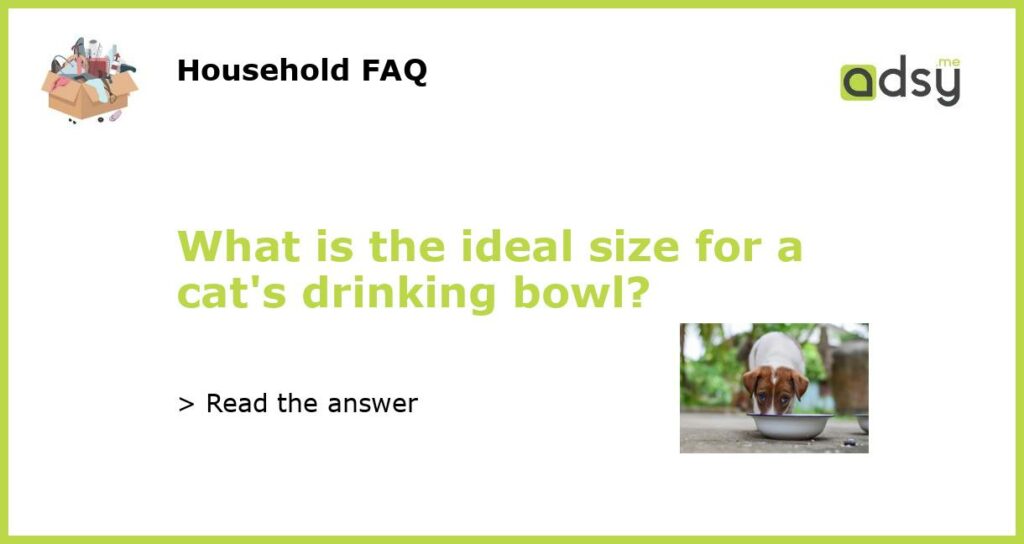The Importance of Proper Hydration for Cats
Cats are known for their independent nature but they rely on their owners for proper care, including hydration. As obligate carnivores, their bodies are designed to derive moisture from their prey. Therefore, it is crucial for cats to consume enough water to support their internal functions, prevent urinary tract problems, and maintain their overall health.
The Size of the Bowl Matters
The size of a cat’s water bowl can impact how much water they consume each day. Some cat owners may believe that a small water bowl is sufficient, but this is not always the case. A small bowl may not hold enough water for a cat’s daily needs, especially if it is the only source of water available.
The Ideal Size for a Cat’s Drinking Bowl
The ideal size for a cat’s drinking bowl is 1 to 1.5 cups. This ensures that a cat has enough water available to them throughout the day without the bowl becoming empty too quickly. Additionally, a larger bowl ensures that the water stays fresher for longer periods of time. Keep in mind that cats have a tendency to play with their water bowls, so a heavier bowl or one with a stable base is ideal to prevent spills.
Other Factors to Consider
In addition to the size of the bowl, there are other factors to consider when providing water for a cat. The bowl should be kept clean and refreshed daily to prevent the growth of harmful bacteria. Additionally, cats prefer drinking out of ceramic or glass bowls rather than plastic. Finally, some cats prefer running water, and may benefit from a cat fountain that continually circulates the water.
Caring for Your Cat’s Hydration Needs
Overall, ensuring that your cat remains properly hydrated is essential to their long-term health. By providing the right size bowl and keeping it clean, as well as considering other factors such as the material of the bowl and water circulation, cat owners can help promote their cat’s wellbeing and prevent potential health issues.






